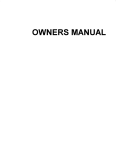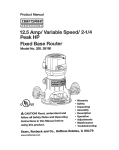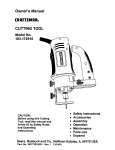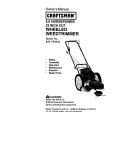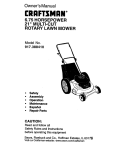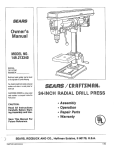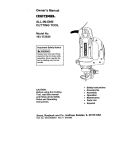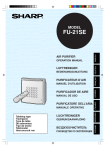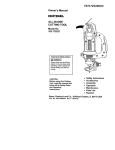Download Craftsman 183.17253 User's Manual
Transcript
Owner's Manual CRAFTSMAN+ ALL-IN-ONE CUTTING TOOL Model No. 183.172530 Important Safety Notice IA WARNING I Always have one hand firmly placed on the tool body while operating_ Never operate the tool by holding ® only the tool handle. CAUTION: Before using this Cutting Tool, read this manual and follow all its Safety and Operating Instructions. Rules • . Safety Instructions • Accessories • • • • Assembly Operation Maintenance Parts List • Espanol Sears, Roebuck and Co., Hoffman Estates, IL 60179 USA Part, No, 183172530001 Rev. 0 t2/25/02 SECTION Warranty ........................................ Product Specifications ...................... Power Tool Safety ............................ Cuffing Too_Safety ........................... Electrical Requirements & Safety ........ Accessories .................................... PAGE 2 2 3 4 5 6 SECTION Carton Contents .............................. Know Your Cuffing Too/ .................... Assembty & Operation ...................... Maintenance ................................... Repair Parts ................................... Parts & Service Availability ................ PAGE 6, 7 8 9 - 13 13 14 - 17 18 FULL ONE YEAR WARRANTY If this Cuffing Tool fails due to a defect in material or workmanship within one year of date of purchase, Sears will at its optionrepair or replace it free of charge. Return this Cuffing Tool to a Sears Service Center for repair, or to place of purchase for replacement. This warran0/gives you specificlegal rights, and you may also have other rights which may vary from state to state. Sears, Roebuck and Co., Dept. 817 WA, Hoffman Estates, IL 60179 [A WARNING I Some dust created by power sanding, sawing, grinding, drilling and other construction activities contains chemicals known (to the State of California) to cause cancer, birth defects or other reproductive harm. Some examples of these chemicals are: Lead from lead-b;_ed paints Crystalline silica from bricks, cement and other masonry products • Arsenic and chromium from chemically treated lumber Your risk from these exposures verles_ depending on how often you do this type of work. To reduce your exposur_ to these chemicals, work In a wall ventilated area and work with approved safety equipment such as those dust masks that are specially designed to filter out microscopic p;lrticles. Motor Rating ...................... Amperes ........................... 2 Speeds (no load) .............. 120V, 60Hz, AC 5.0 Amperes 20000 & 30000 RPM Motor Horsepower ...... Weight ..................... 3/4 HP (Maximum Developed) 1.7 kg ]Jh_ WARNING] To avoid electrical hazards, fire hazards or damage to the cutting tool, use proper circuit protection. This cutting tool is wired at the factory for 110-120 Volt operation. It must be connected to a 110-120 Volt 115 Ampere time delay fuse or circuit breaker. To avoid shock or fire, replace power cord immediately if it is worn, cut or damaged in any way. Before using your cutting tool, it is critical that you read and understand these safety rules. Failure to follow these rules could result In serious InJery to you or damage to the cutting tool. IA WARNING] Before using your cutting tool, it is critical that you read and understand these safety rules. Failure to follow these rules could result in serious injury to you or damage to the cutting tool, Good safety practices are a combination of common sense, staying alert and understanding how to use your power tool. To avoid mistakes that could cause serious injury, do not plug in your cutting tool until you have read and understood the following safety rules: 15. REMOVE ADJUSTING KEYS ANDWRENCHES. Form the habit of checking tOsee that keys and adjusting wrenches are removed from the tool before taming =ON". 1. 16. NEVER LEAVE TOOL RUNNING UNAI-rENDED. TURN THE POWER "OFF". Do not leave the tool before it comes to a complete stop. READ and become familiar with this entire Owner's Manual. LEARN the tool's applications, limitations and possible hazards. 17. NEVER STAND ON TOOL. Serious injury could occur if the tool is tipped or if the cutting tool is unintentionally contacted. 2.I& WARNINGI Look for this symbol that identifies important safety precautions, it means CAUTIONI BECOME ALERTI YOUR SAFETY IS INVOLVED! 3. KEEP GUARDS IN PLACE and in working order. 4. DO NOT USE IN A DANGEROUS ENVIRONMENT such as damp or wet locations or exposure to rain. Keep work area well lighted. 5, DO NOT use power tools in the presence of flammable liquidsor gases. 6. KEEP WORK AREA CLEAN. Cluttered areas and workbenches invite accidents. 7. KEEP CHILDREN AWAY. Ati visitors should be kept at a safe distance from the work area. 8. DO NOT FORCE THE TOOL It will do the job better and safer at the rate for which it was designed, 9. USE THE RIGHT TOOL Do not foree the tool or attachment to do a job for which it is not designed. 'f8. DO NOT OVER REACH. Keep proper footing and balance at aft times. t9. MAINTAIN TOOLS WITH CARE. Keep toots sharp and olean for most efficient and safest performance. Follow instructions for lubricating and changing accessories. 20, CHECK FOR DAMAGED PARTS. Before further use of the tool, a guard or other part that is damaged should be carefully checked to ensure it will operate properly and perform its intended function. Check for alignment of moving parts, binding of moving parts, mounting and any other conditions that may effect its safe operation. A guard or other part that is damaged should be properly repaired or replaced. 21, MAKE WORKSHOP CHILD PROOF with padlocks, master switches or by removing starter keys. 22. DO NOT operate the tool if you are under the influence of any drugs, alcohol or medication that could impair your ability to use the tool safely. 10. WEAR PROPER APPAREL DO NOT wear loose clothing, gloves, neckties, rings, bracelets or other ewelry that may get caught in moving parts. Non-slip footwear s recommended. Wear protective hair covering to contain long hair. 23. USE DUST COLLECTION SYSTEM wherever possible. Dust generated fTom certain materials can be hazardous to your health and in some cases, a fire hazard. Always operate the power tool in a well ventJlatad area with adequate dust removal. 11. WEAR A FACE MASK OR DUST MASK. Sawing, cutting, drillingand sanding operations produce hazardous dust. 24. ALWAYS WEAR EYE PROTECTION. Any power tool your eyes which could catJse permanent eye damage. can throw foreign objects into ALWAYS wear safety goggles (not glasses) that comply with ANSI safety standard 7_87.1. Everyday gtasaes have only impact resistant lenses. 111eyARE NOT safety glasses. Safety goggles are available at Sears. 12. DISCONNECT TOOLS FROM THE POWER SOURCE before sewicing and when changing accessories such as blades, bits, cutters, etc, 13. REDUCE THE RISKOF UNINTENTIONAL STARTING. Make sure the switch is in the "OFF" position before plugging into the power source. 1A WARNING I 14. USE ONLY RECOMMENDED ACCESSORIES. Consult the Owner's Manual for recommended accessodss. The use of improper accessories may cause injury to you or damage to the tool GlaSses or goggles not In compliance with ANSI Z87,1 could cause serious Injury when they break. SAVE THESEINSTRUCTIONS 3 FOR REFERENCE IA WARNING) For your safety, do not plug in your cutting tool or try to use any accessory until it is completely assembled and installed according to these instructions, and until you have read and understood this Owner's Manual. 11. NEVER HOLD THE WORKPIECE IN ONE HAND while operating the tool with the other hand. Failure to follow these safety rules will result in risk of serious Injury. 13. NEVER START THE TOOL WHEN THE BIT IS TOUCHING THE WORKPIECE. The bit may catch the workplace causing loss of control, 1. 2. WEAR EYE PROTECTION. This high speed tool will throw particles from the workpiese dudng operation. Make sure safety glasses have side shields. USE HEARING PROTECTION, extended pedods of operation. 4. NEVER USE DULL OR DAMAGED BITS, Damaged bits can break without warning. Dull bits may overload the motor, cut slewiy and are difficult to control. They will also overheat and possibly break. 5. ALWAYS MAKE SURE THE WORKPIECE IS FREE OF NAILS AND OTHER FOREIGN OBJECTS. If the bit stdkes a nail it will jump sideways and possibly break. t5. TURN OFF ALL CIRCUIT BREAKERS AND REMOVE ALL FUSES in the work area when cutting into walls or blind areas. perticulady dunng 6. DO NOT USE THIS TOOL FOR DRILUNG It is NOT intended to be used as a ddlL 7. ALLOW CLEARANCE UNDER WORKPIECE for bit to travel. Never place workplace on hard surfaces such as concrete etc. The bit may jump or break when contacting a surface other than the one being cut, 9. t4. ALWAYS HOLD THE TOOL WITH I_VO HANDS DURING START-UP AND OPERATION. When starting, motor torque will cause the tool to twist. USE FACE OR DUST MASK along with safety goggles if cutting or muting operation is dusty, Make sure work area is well ventilated, 3. 8. 12. NEVER PLACE HANDS IN THE PATH OF THE cUTrER AND UNDER THE WORKPIECE. 16, ALWAYS HOLD THE TOOL BYTHE INSULATED GRIPPING SURFACES ON THE BODY OF THE TOOL where there is any possibilityof the cutting bit contacting hidden electrical wires or the cord of the tool. Contact with "live" wires will make exposed metal parts of the tool "live" causing an electrical shock to the operator. 17, WHEN CUTTING DRYWALL ELECTRICAL OUTLET OPENINGS using the outlet as a guide, always cut in a counter clockwise direction. The natural tendency of the tool to pull to the left will cause a "hugging" action toward the outlet box, resulting in a neatar cut. HOLES. 18. NEVER LAY THE TOOL DOWN UNTIL THE CUTTING BIT COMES TO A COMPLETE STOP. A spinning bit can come in contact with the surface and pull it out of your control, 19, NEVER TOUCH THE CUTRNG BIT IMMEDIATELY AFTER USE. The bit will be too hat to be handled with ALWAYS SET THE DEPTH GUIDE TO THE APPROPRIATE DEPTH. Use tool with the depth guide fiat against the work surface for better control of the tool. bars hands and will bum your fingers. 20, ALWAYS RE-TIGHTEN COLLET AND ALL ADJUSTMENTS before starting the too/after a cutting bit or accessory has been changed. Loose bits and adjustments can cause unexpected shifting of the tool resulting in loss of control and injury from the bit or cutting tool being thrown. NEVER USE THE TOOL WITHOUT THE SOLE pLATE, PRECISION HANDLE OR ROUTER BASE attached and appropriately adjusted. 10. ALWAYS CLAMP WORKPIECE TO HOLD IT S1T=ADY WHEN CUTnNG, This will free both hands for operating the tool. SAVE THESE INSTRUCTIONS 4 FOR REFERENCE Ie]|J =_lil= II_l-_|l W±lil[o]_ This cutting tool is double insulated to protect you from electrical shock. IA WAJ NING I Double insulated tools are equipped with a polarized plug (one blade is wider than the other). This plug will fit into a polarized outlet only one way. ffthe plug does not fit fully into the outlet, reverse the plug. If it still does not fit, contact a qualified eis_dcisn to install a polarized outlet. [3o not alter the plug in any way. Double insulation eliminates the need for the three wire grounded power cord and grounded power supply system. Avoid body contact with grounded surfaces such as pipes, radiators, ranges and refrigerators. There is an increased risk of electric shock if your body is grounded. Do not expose power tools to rain or wet conditions. Water entedng a power tool will increase the risk of electric shock. Do not abuse the cord. Never use the cord to carry the tool or pull the plug from the outleL Keep cord away from heat, off, sharp edges and moving parts. Replace damaged cords Immediately. Damaged cords increase the dsk of electdc shock. When operating a power tool outdoors, usa an outdoor extension cord marked "W-A" or "W". These cords are rated for outdoor use and reduce the risk of electric shock. IJ_ WARNING I Always makesure the receptacle is polarized. If you are not sure, have a qualified electrician check the receptacle. Make sure your extension cord is in good condition. When using an extension cord, be sure to use one heavy enough to can/the current the tool will draw. An undersized cord will cause a drop in line voltage resulting in lose of power and overheating. The table below shows the correct size to use according to cord length and nameplate ampere rating. If in doubt, use the next heavier gauge. The smaller the gauge number the heavier the cord. Be sure your extension cord is properly wired and in good condition. Always replace a damaged extension cord or have it repaired by a qualified electrician before using it. Protect your extension cord from sharp ct_jects, excessive heat and damp or wet areas. Use a separate electrical circuit for your power tools. This circuit must not be less than 14 gauge wire and should be protected with either a 15 Ampere time delay fuse or circuit breaker. Before connecting the power tool to the power source, make sure the switch is in the OFF position and the power source is the same as indicated on the nameplate. Running at lower voltage will damage the motor. IA WARNING I Repair or replace immediately, damaged or worn extension cords Select the appropriate extension cord gauge and length using the chart below. MINIMUM GAUGE (AWG) EXTENSIONCORDS (120 Volt use only) Ampere Rafing Not MoreThan MoreThan 0 6 6 10 10 t2 12 16 Total length in feet 25' t8 t8 50' I 100' 16 16 16 ] 14 150' 14 12 t6 t4 16 I NotApplicable 14 12 12 IA WARNINGI Keep the extension cord clear of the working area. Peeltlon the cord so it will not got caught on the workpiece, tools or any other obstructions while you are working with the power tool. ;f-'1£.4I[o]_EaZo]_ III _ _| I_ AVAILABLE ACCESSORIES UNPACKING IA WARNINGI [A Use only accessories recommended for this cutting tool. Follow instructions that accompany accessories. Use of improper accessories may cause injury to the operator or damage to the cutting tool. ff any pert is missing or dameged, do not plug the cutting tool into the power source until the missing or damaged part is replaced end assembly is complete. Visit your Sears Hardware Department or see the Sears Power andHand Tool Catalog for an assortment of accessories recommended for use with this cutting tool: Carefully unpack the cutting tool and all its components, Compare against the "Cutting Tool Components" chart below. NOTE: See Page 7 for illustration of components, Flex Drive (_, Rip Guide Router Circle Cutter I/_" Curt'rag Bits _ls" Hobby Rotary Tool Accessories _- Cutters ;" Polishers _. Sanders >, Gdnders Most ¼" Shank Router Bits AND CHECKING CARTON CONTENTS WARNING WARNING I I To avoid fire or toxic reaction, never use gasoline, naphtha, acetone, lacquer thinner or similar highly volatile solvents to clean the cutting tool. cuTrlNG KEY r A B C D IA WARNINGI Use only accessories designed for this cutting tool to avoid severe injury or tool damage. E F G H I J Do not use any accessory unless you have completely read the instructions or Owner's Manual for that accessory. TOOL COMPONENTS DESCRIP'flON I QTY Cutting Tool Box Cutting Tool Collet Wrench Collet Wrench Holder Owner's Manual Accessory Box Precision Handle with Sole Plate Freehand Sole Plate Attachment 1/8" Collet Sleeve 1/4" Collet Sleeve Lateral Styte Drywall Cutter Wood / PlasUc / Fiberglass Cutter 1 1 1 1 1 1 1 1 1 1 NOTE: The two most commonly used cutters are included with this tool (items I & J). It is Important that you use the co_ cutter to ensure the most efficient cutting action. 6 • Use cutter =1"with the finer spiral for cutting drywall • Use the general purpose cutter "J" wIth the coarser spiral for cutting materials such as wood, plastic and fiberglass. Cutting Tool Box Accessory Box I J 7 Rate IA WARNING] Remove the plug from the power source before assembly, changing accessories or cutters and making adjustments. This safety action will help prevent accidental starting of the tool which could result in serious injury. INSTALLING 4. CUTRNG BITS - Cont'd Insed new cutting bit (4) into the collet. IA WARNING I Insert the bit all the way into the cohet and then pull it back between t/t0" and l/e", This creates an air space between the motor shaft end the hit to help prevent overheating the bit. OH I OFF & SPEED CONTROL SWITCHES This cutting tool is equipped with a sliding ON / OFF switch (1) located on the side of the tool and a speed control switch (2) located on top of the tool (see Fig. 1). Before tightening the collet on the bit, make sure the flutes (spiral portion) of the bit ere completely visible outside the catfat. Clamping the coltst on the bit flutes will result in broken bits and possible _ injury. 5, When hit is propedy placed in the collet, depress the shaft locking button and turn the collet nut clockwise by hand as far as possible, 6. Securely tighten collet nut using the wrench. Fig. 1 1. TO turn the toot ON, slide the switch (1) up. 2. To turn the tool OFF, slide the switch down, 4 3. To set speedto highspeed,slidespeedcontrolswitch (2) awayfromthe ON / OFF switch. 4. INSTALLING iA WARNING CUTtiNG I To insert a cuffing bit, use the collet wrench which is.in the wrench holder attached to the power cord. Deprese the shaft locking bufton (1} and mtste the collet lock nut (2) clockwise with the other hand until the locking button drops into place, preventing the shaft from turning (see Fig, 2). 2. While continuing to hold the shaft locking button IN, use the coflet wrench (3) to rum the collet nut counter clockwise. Loosen the collet nut two or three turns. 3. Remove bit if one is already installed in the tool. 2 Fig. 2 BITS Cutting bit and router bit cutting surfaces are extremely sharp. Handle with caution. 1. 3 To set the speed control switch to low speed, slide the speed control switch (2) toward the ON / OFF switch. WORK LIGHTS The motor unit has two buitt-in work lights (5) (see Fig, 2). These work lights automatically light up when the motor switch is famed ON. Patterns or drawings in the immediate vicinity of the bit will be illuminated for better visibility and improved cutting accuracy. SELECT APPROPRIATE MOTOR SPEED Selecting the appropriate motor speed will ensure smoother, more efficient cutting action. Choose LOW speed for grinding, cuffing plastics, polishing and when using wire or bristle brushes. Cheese HIGH speed when cutting wood. using cut-off wheels and to reduce "shatter" that may develop when cutting some materials at LOW speed. CHANGING COLLET INSERT INSTALLING Thecutting 1. Slide freehand sole plate mounting bracket (1) onto the bottom of motor housing (2) until the slot in the bracket (3) lines up with the shaft locking button (4) in the motor housing. NOTE: The mounting bracket must be pushed onto the motor housing as far as it will go. 2. Lock the sole plate to the motor housing by snapping the quick locking lever (5) firmly against the motor housing. bits for this tool are locked into place with a collar nut (1) and coJlet (see Fig. 3). The tool is assembled at the factory with NO coilet installed. Both the l/a" and ¼" coilets can be found in the carrying case front lid storage compartment. The 1/8" toilet (2) is used for holding hobby tool accessory bits. The ¼" coflet (3) is supplied for holding SMALL router bits with a %" shank. FREEHAND SOLE PLATE - €ont'd 2 4 Fig. 3 3 To change from one cotlet size to the other:. 1. Remove bit from the tool. 2. Continue turning the collet nut counter clockwise until it can be removed from the motor shaft (4). 3. Pull the co,el out of the motor shaft and replace it with the other one. NOTE: Each collet is the same on both ends, so either end can be inserted into the motor shaft, 5 Fig. 4 ADJUSTING 1. 4. Re-install the collet nut and slightly tighten it by hand. 5. Install the new bit as outlined in INSTALLING CUTTING BITS on Page 9. NOTE: Tightaning the oollet nut without a bit in the sallet will cause the collet hole to become smaller and make installing bits difficult. When stodng the toot with no bit installed, leave collet nut loose. j _'4::1:1:r_,l_A0]l,-,]la]iP_s-_J _,__-_ ._ INSTALLING FREEHAND SOLE PLATE The freehand sole plate is designed for basic freehand cuffing with the cuffing bit. It is ideally suited for cuffing electrical outlet holes in dPJwall. IA FREEHAND SOLE PLATE Adjust freehand sole plate depth by loosening the depth gauge locking knob (6) and rotating the adjusting knob (7) to move the sole plate in or out as required (see Rg. 5). NOTE: Set the depth gauge so the cutting bit protrudes beyond the sole plate 1/0" more than the thickness of the matadal being cut. For example, if you are cutting s/6"drywall, the bit should protrude ¾" beyond the sole plate. 2. Securely tighten depth gauge knob. 3. Before starting to cut you should re-check bit depth. Make sure sole plate is at dght angles to the bit and securely tightened. Re-check the collar to make sure the bit is sacureb/fastened. WARNING I Do NOT use the freehand sole plate with router bits. Limited control with this accmmory could cause you to lOOSecontrol and Increasethe chance of serious Injury, Fig. 5 lO PRACTICE CUTS USING FREEHAND SOLE PLATE ,_k WARNING J Have you read "pOWER TOOL SAFETY", "CUI-rING TOOL SAFETY" and "ELECTRICAL SAFETY" on pages 3, 4 and 5 of this Manual? If not, please do it now before you operate this cutting tool. Your safety depends on ttl Every time you use the cutting tool you should verify the following: 1. Cutting tool cord is not damaged. 2. Bit is correct type for the material being cut. 3. Bit is sharp, in good condition, properly installed and securely tightened. 4. Safety glasses and dust mask are being worn. 6. Set the speed control switch to the appropriate speed. 7. Turn the switch ON. 8, When the motor is up to full speed, slowly tip the tool to an upright position, le_ng the bit cut into the work.piece (see Fig. 7). Once the tool has roached the updght position and the bit has cut through the workpiece, slowly move the tod in a clockwise direction using slow steady pressure to make the cut. NOTE: Except for cutting around outlet boxes in drywall, always cut in a clockwise direction. 9. When cut is complete, turn the tool OFF, wait until it comes to a complete stop and remove it from the workpiece, Failure to adhere to these safety rules can greatly increaseyour chances of injury. PRACTICE CUTS USING FREEHAND SOLE PLATE Before attempting to work on an actual project, take the time to make a few precise cuts with your cutting tool. Use some scraps of moledal that are the same material as used in your actual project. 1. 2. Draw a pattern similar to your first project on a scrap piece of material. Fig. 7 Install freehand sole plate as shown in Fig. 4. IA O ( ER] Do not attempt cutting around outlet boxes in drywall until: 1. All electricity in the vicinity of electric wires has been dtaconns_ted by either turning the breaker OFF or removing the fuses. 3. Installcuttingbit in the collolas shownin Fig.2. 4. Adjust depth of freehand sole plate as shown in Rg. 5. 5, Rest the edge of the sole plate on the workpiece with the bit at an angle of about 45 ° (see Rg. 6), NOTE: DO NOT let the bit contact the workplece until switch is turned ON and the tool is up to full speed. 2. JA WARNING I You have read the instructions on the following page entitled "CUTTING OUTLET OPENINGS IN DRYWALL". cUTrlNG Before turning the tool switch ON, make sure you hold the tool firmly with both hands. Starting torque will cause the tool to twtaL TIPS The rotating cutting action of the bit will cause a slight pull to the left when cutting. Natural variations in the structure of wood will cause the bit to "wander'. This tendency will be magnified when applying too much pressure to the bit, _ower cutting givoa you better control. Excessive pressure or fast cuffing will increase bit temperature and shorten _ life ofthe bit. When cutting a hole in e vertical surface, avoid ending the cut at the bottom Of the hole. Always start and end the cut at the "top" so the cut.out part will not drop onto the rotating bit. Always turn the tool OFF before removing it from the workpiece. Fig. 6 11 CUTTING OUTLET OPENINGS IN DRYWALL CUTI'ING OUTLET OPENINGS IN DRYWALL - cont'd IAOANGER I Do not attempt to use this tool to make cut-outs around any fixture or opening which has live electrical wires or on any wall which may have electrical wiring behind iL If a live wire is contacted, the bit could conduct the electric current to the tool, creating an electrocution hazard for the operator. Turn OFF breakers or remove fuses to disconnect the electric circuit in the area of work. Always hold the tool by its insulated housing when working in areas where there is a possibility of contacting electric wires. Always wear eye protection when operating this tool. 1. Before installing drywall, push the electdcal wires to the back of the box as far as possible so they will not be cut by the bit when cutting the opening. 2. Before fastening the dr/wall sheet over the electrical box, mark the sheet as close as possible to the center of the box opening. Mark should be on the side of the drywall facing you, 3. 4. 5. 6. Move the bit slowly to the right until you feel and hea the bit contacting the inside of the box. 7. Put] the bit out far enough to slip it over the edge of the box. Once the bit is outside the box. push it back to full depth beside the out,de edge of the box. 8. Move the toct upward while applying slight pressure toward the center of the box. When you feel the bit roach the top dght hand comer of the box, move the tool to the left while applying slight pressure downward toward the center of the box. 9. Continue moving the tool around the box in a counter clock'w_se direction while maintaining slight pressure toward the center of the box. When the box cut-out is complete. Turn the tool OFF and remove it from the cut-out, 10. Completed electrical box cut-out will be accurately an_ neatly cut (see Fig. 9). When fastening the drywall in place, do not place nails or screws closer than 12" from the box. This will prevent the drywall from becoming deformed under pressure. i I Insert cutting bit and install freehand sole plate as outlined on Pages 9 & 10 of this Owner's Manual. Adjust depth of cut so the bit will protrude l/s" beyond the thickness of the drywall. I I \ Hold the tool firmly with both hands and tum it ON. Runge the bit through the drywalt at the mark indicating the center of the box. See Fig. 8 for cutting pattem. Fig. 9 NOTE: Always move the cutting bit in a counter dockwlee direction around the oullet box. The natural tendency of the cuffing bit _ move to the left will make it easier to cut close to the box. Fig. 8 12 i-|:[l_l._][a] _1 -"r:1_isis INSTALLING vtF-'II _/III LIF_,I _[_ I PRECISION HANDLE I,_. DANGER For your own safety, turn the switch OFF and remove the plug from the power source before maintaining your cutting tool. The precision handle is designed for use when precision control over the tool movement is desired. The comfodabie handle can be used with either the dght or left hand. 1. 2. When servicing, use only identical Craftsman ports. Use of any other part may create a hazard or cause product damage, Slide precision handle mounting bracket (1) onto the bottom of motor housing (2) unffi the slot under the handle (3) lines up with the shaft tocking button (4) in the motor housing (son Fig. 10). NOTES: EXTERNAL CLEANING IA W NINGJ a) The mounting bracket must be pushed onto the motor housing as far as it will go. b) The shaft locking button (5) can now be activated by your thumb while holding on to the precision handle DO NOT use solvents when cleaning plastic parts. Most plastics are susceptible to damage from various types of commercial solvents and may be damaged by their use. Use clean cloth to remove dirt, dust, oil, grease, atc. Lock the predsion handle to the motor housing by snapping the quick locking lever (6) firmly against the motor housing. Do not at any time allow brake fluids, gasoline, petroleum-based products, penetrating oils, etc. to come in contact with plastic parts. They contain chemicals that cen damage, weaken or destroy plastic INTERNAL CLEANING It has bonn found that electdc tools are subjected to accelerated wear and possible premature failure when they are used on fiberglass boats and sports cars, wallboard, spackling compounds or plaster. The chips and gdndings from these materials are highly abrasive to electric tool parts such as beadngs, brushes, commutaton_, etc. Dudng any use on these materials it is extremely important that the tool is cleaned frequently by blowing out with a compressed air jet. Fig. 10 ADJUSTING 1. FREEHAND SOLE PLATE Adjust precision handle sole plate depth by loosening the depth gauge locking knob (7) and rotating the adjusting knob (8) to move the sole plate (9) in or out as required (see Fig. 11). NOTE: Set the depth gauge so the cutting bit protrudes beyond the sole plate _/a" more than the thickness of the material being cuL For example if you are cutting 3/4"pine, the bit should pm_Jde fiB" beyond the sole plate. I_, DANGER ] It Is critical that you wear safety goggles or safety glasses with side shields and a dust mask while blowing dust out of the cutting tool with a compressed air jet. Failure to take these safety precautions could result in permanent eye or lung damage. POWER CORD MAINTENANCE 2. Securely tighten depth gauge knob. 3. Before starting to cut you should recheck bit depth, make sure sole plate is at right angles to the bit and securely tightened. Re-check the coliet to make sure the bit is oncumly fastened. I_h, WARNINGJ To avoid shock or fire hazard, replace the cord immediately if it is worn or damaged in any way. LUBRICATION A_Iof the bearings in this cuffing tool are lubdcated with a sufficient amount of high grade lubricant for the life of the unit under normal conditions. Therefore, no further lubrication is required. Fig. 11 13 Main Unit 14 IA w ,J.6 I When servicing use only CRAFTSMAN replacement damage to your Cutting Tool. parts. Use of any other parts may create a HAZARD or cause Any attempt to repair or replace electrical parts on this Cutting Tool may create a hazard unless repair is performed by s qualified technician, Repair service is available by contacting your nearest Sears Service Center. Always order by PART NUMBER, not by key number. Main Unit Key # Part # 1 01AR-O00032-0O 2 ! 01AR.-000035_0 3 01AT-000014-A0 5 01AT-O00031-00 10 02AE-O00060-00 11 02AE-O00061-00 12 02AK_00022-00 Part Name Beadng Sleeve Switch presser Bushing tube Bushing tube Front beadng Rear beadng Rivet 13 14 15 17 18 02AH-000088-00 02AH-000089-00 02AH-000112-00 02AS-000199-A0 02AS-000201-A0 Brush spdng Spindle spring Hanger Case screw Screw 22 23 02AW-000055--00 03AA-000279_0 Retaining ring Transformer 24 25 28 29 30 31 34 35 36 37 38 39 40 41 42 03AC-000011 -F0 03AC-000043-00 03AD-OO0009-A0 03AD-OOO040-0O 03AD-000074-00 03AD-000075-00 03AM_00104_0 03AM-000105-00 03AP-000073-00 03AP_00076-00 03AR-000013-AO 03AR-000015-D0 03AR-000109-A0 03AS-000135-00 03AS-000140_00 Capacity Capacity Diode Diac LED Triac Stator Rotor PCS PCB Resistor Resistor Resistor Micro switch Switch Qty 1 Key # 44 Part # 03AT-O00033-00 Part Name Terminal block Qty 1 1 2 2 1 1 4 2 1 1 48 49 50 53 55 56 59 62 82 03AT-000040-O0 03AT-000046_0 03AW_00131-00 03AY-000020-00 03AY.-000073-00 03AY...(X)0074-00 04AP-000068-00 2203-MA0003-00 2203-MA0004-00 Terminal (female) Carbon brush Power cord Wire Wire Wire Fibra 1/4" collet 1/8" toilet 2 2 1 1 2 2 1 1 1 8 3 1 63 87 70 2203-MA0007-00 2207-MA0003-00 2213-MA0002-O0 Lock plate Spindle lock Conductor 1 1 2 1 1 1 4 1 2 71 72 73 74 76 2213-MA0005-O0 2213-MA0006-00 2213-SAM001-00 2213-MA0011-00 2213-MA0012-00 2213-MA0014-00 Chuck cap Spanner Sms_ assembly Metal conducter Brush case Wire cover 1 1 2 2 2 1 1 1 1 77 79 81 2213-MA0015.O0 2203-PA0008-00 2213-PA0022-00 Stop plate Spanner belt Bottom cabinet 1 1 1 1 1 1 1 3 1 1 82 83 84 85 87 91 92 2213-pA0023-00 2213-PA0024-00 2213-PA0025-00 2213-pA0026-O0 2213-PAD028-00 9866-PA0004-00 9920-PA0011-00 Top cabinet Switch cover Lock button Cover 2P-Switch Press plate Cord Sleeve 1 1 1 t 1 1 1 15 Freehand Soleplate Assembly 212 2O2 2°, 208 215 214 203 216 \ 213 Key# 201 202 203 208 2tl 212 213 214 215 216 part# 02AF-000041-10 02AF-000076-00 02AS-000287-00 2213-MA0010-00 22t3-PA0010-00 2213-PA0011-00 2213-PA0012-00 2213-PA0013-00 2213-PA0014-00 2213-PA0015-00 Part Name Fodngshaft Releaselock pin Screw Freecutmetalround guide Lock F_base plasticguidebase Adjus_nentGear 151" Sleeve Screwlock F 16 oty 1 1 1 1 1 1 1 1 1 1 Handle Assembly ,11301 321 Part# 02AF-000041-10 02AF-000076-00 02AH-000106-00 02AS-000148-00 02AS-000199-A0 02AS-000287-00 02AS-000288-00 02AW-000067-00 2213-MA(X)13-00 2213-PA0010-00 2213-PA0012-00 2213-PA0013-00 2213-PA0014-00 2213-P/_0015-00 2213-PA0016-00 2213-PA0017-00 2213-PA00t8-00 2213-PA0019-00 2213-PA00LT0-00 221_-PA0021-00 Part Name Fixingshaft Releaselock pin Compressivespdng Screw Screw Screw Screw Washer S-roundguideholder Lock Ple._c guidebase Ad.kastmeotGear 15"1" Sleeve Scow lock F Anx righthandle Ar_ left handle Anx handlesoft_o (outskle) Anx handleso_p (i_de) Shaft F5-5 17 For repair of major brand appliancesin your own home... no matter who made it, no matter who sold it! 1-800-4-MY-HOME ® Any_me, dayornight (1-300-469-4663) (U.SJ_andCanada) WWW.sears.collt wlNw,sears.cEi For repair of curry-inproductslike vacuums, lawn equipment, and electronics,call for the locationof your nearest Sears Parts and Repair Center. 1-800-488-1222 Any_me, dayorn_ht(U.SAonly) www.sean;.com For the replacement parts, accessoriesand owner's manuals that you need to do-R-yourself,cull Sears PartsDirectSUl 1-800-366-PART sa.rn.-11 p.m.CST,7daysaweek (1-800-366-7278) (U.S.A.only) www.sears.com/par ts direct To purchaseor inquireabout a Sears Service Agreement or Sears MaintenanceAgreement: 1-800-827-6655 (u.s._) 1-800-361-6665 7 a.m.- 5 p.m.CST,Mon.- SaL 9 a.m.- 8 p.m.EST,M- F, 4 p.m.Sat Parapedrservido derepa'ad_a domicilio, y parao=denar piezas: 1.88B.SU.HOGAR (Canada) ._uCanada pourse_ceenfrarx;_s: 1-800-LE-FOYER Mc sM (1-800-53.3-6937) (1-888-784-6427) www.seam.ca @ RIg_mld Tmd_ll_ I _ Tmdlmwk I IM Sen_m I&lrk _ :Sunl, _ Ind C_ @_ Re_t_nCal l ltd Metca de FM_lk:a l m Ma_l de _a'._o de Seltl, Roebu_ and Co. =¢ Ma_ dl _ l Va Matq_ d6pol_e de Seam, Ro_ lmd Co. 18



















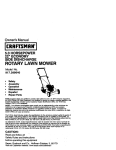

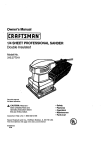

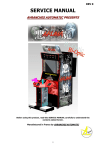
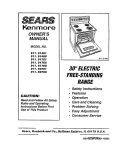
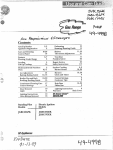
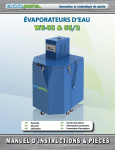
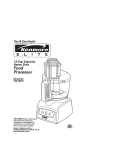

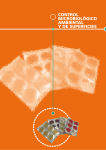
![Hire And Sales Catalogue V4.40 [april2013].](http://vs1.manualzilla.com/store/data/005975062_1-8950e43f7cbe305f577dc550ee5fbd1b-150x150.png)
